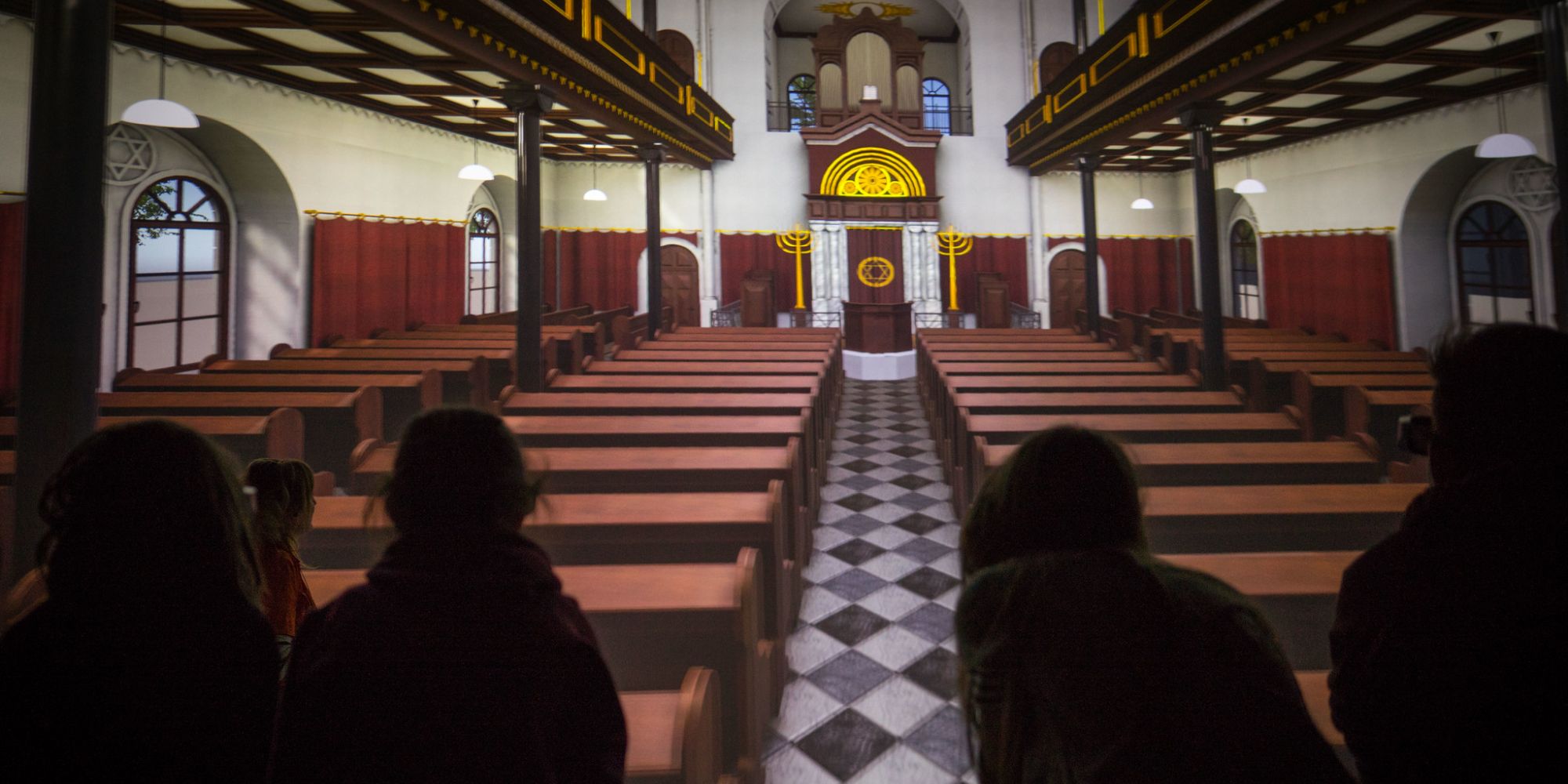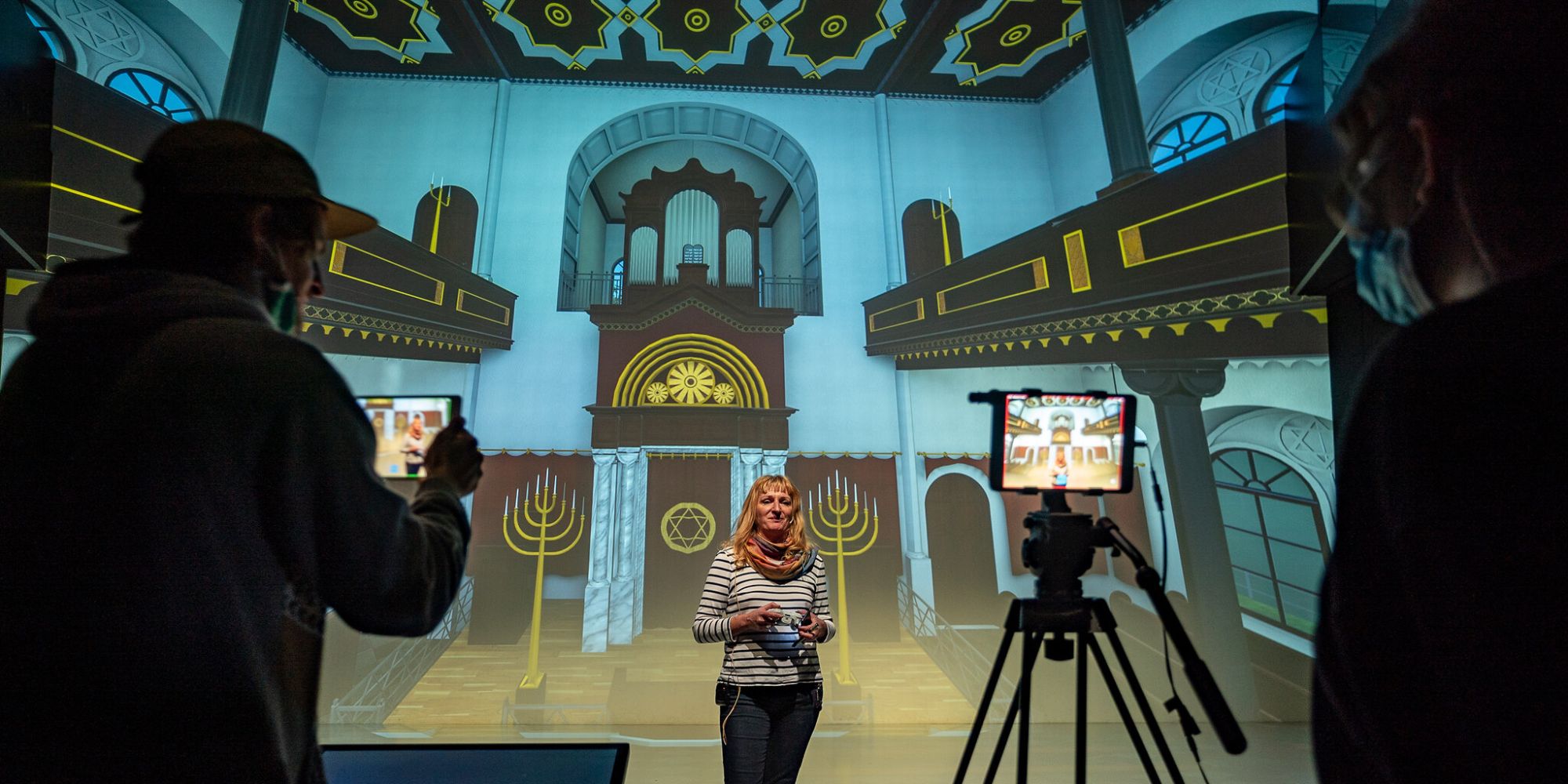Destroyed by Nazi sympathizers in November 1938, the Linz Synagogue was brought back to life 78 years later and opened to the public as a virtual reconstruction by architecture student René Mathe in collaboration with the Jewish Museum Vienna and the Ars Electronica Futurelab.
During the Kristallnacht (Night of Broken Glass) of 1938, Jews were murdered and incarcerated by members of the Nazi regime and their sympathizers – the prelude to the deportation of more than 30,000 people to concentration camps. In addition, thousands of synagogues, meeting rooms, stores, homes and cemeteries of Jewish people were stormed and destroyed. One of these buildings was the Linz synagogue, inaugurated in 1877, which was looted and set on fire by a mob on Kristallnacht in 1938, leaving only ruins.
In November 2016, it became accessible again as a virtual replica, based on the work of René Mathe. As part of his master thesis at the Vienna University of Technology, Mathe created a virtual reconstruction of the Linz synagogue. His work enabled the Ars Electronica Futurelab to create a 3D visualization that allows visitors to take a virtual tour in Deep Space 8K and take a closer look at the various rooms of the destroyed Jewish house of worship. The goal was to make this center of Jewish religious life tangible for people today.
The reconstruction was complemented by high-resolution photographs of ceremonial objects: the curtain covering the storage drawer of the Torah scrolls, a pointer used in reading the parchment scroll and an ornamental plaque adorning it in the drawer, and a Jewish marriage certificate. They all come from the collection of the Jewish Museum Vienna and were photographed by the famous artist Lois Lammerhuber. Linz photographer Florian Voggeneder visited the new Linz synagogue and photographed the bima, the rimonim, the shofar and the Torah mantle.
You can learn more about the spiritual, societal and very personal significance of the project in the interviews with the architect René Mathe and Danielle Spera, the then director of the Jewish Museum Vienna, in our Ars Electronica Blog.
Credits
Ars Electronica Futurelab: Roland Haring, Michael Mayr, Clemens F. Scharfen





